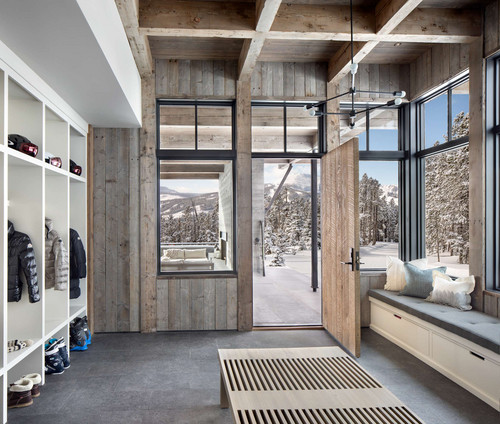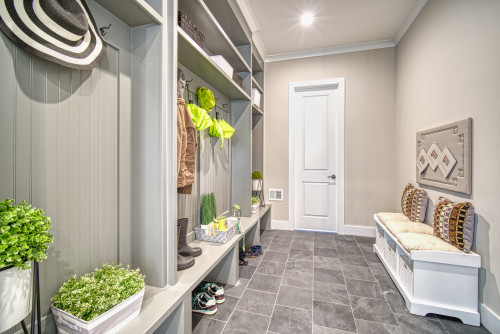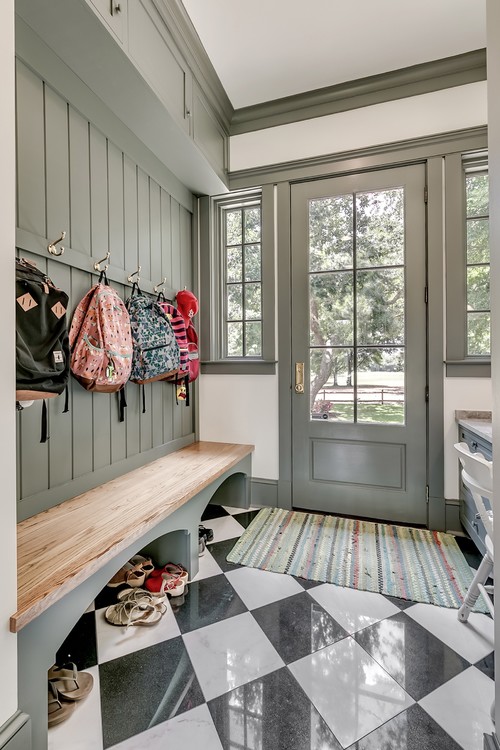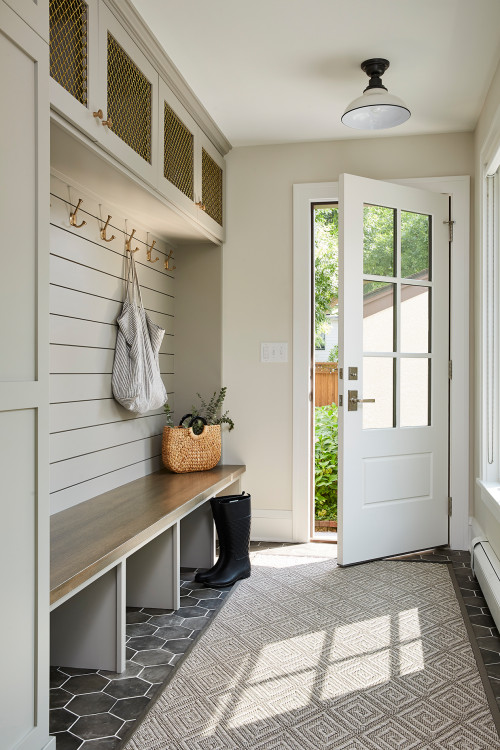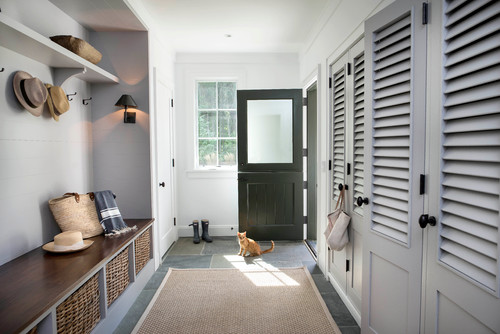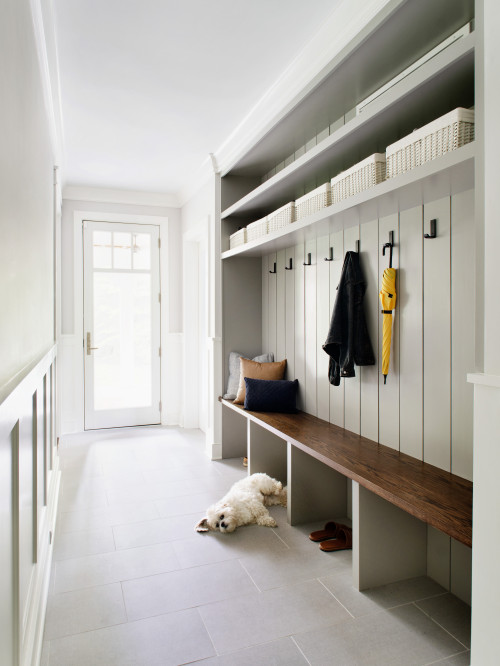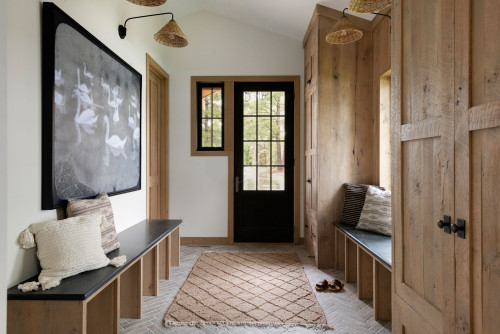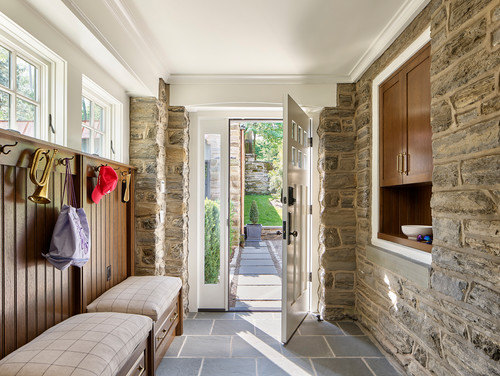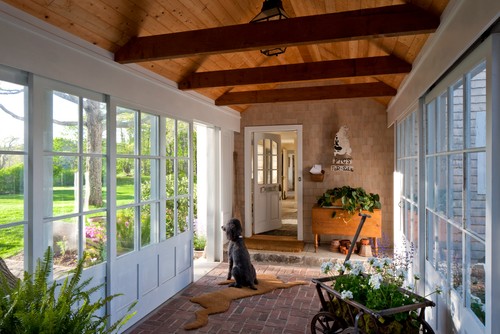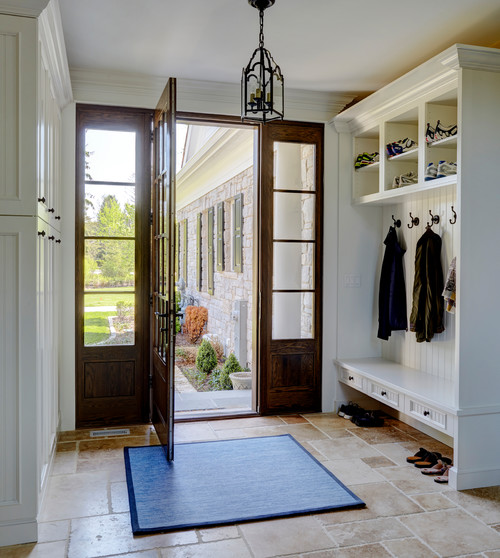As someone who loves having a clean and organized home, I’ve come to realize the immense value of a well-designed mudroom. This often-overlooked space serves as the first line of defense against the dirt and clutter that can invade my living spaces.
If you’re thinking about adding or redesigning a mudroom in your home, here are some essential tips and ideas to guide you through the process.
Table of Contents
Why a Mudroom is Important for Your Home?
A mudroom is more than just a place to kick off your shoes. It’s a transition space between the outdoors and indoors, helping to keep your home cleaner and more organized.
By providing a designated spot for coats, shoes, bags, and other outdoor gear, a mudroom can reduce clutter and make it easier to find what you need when you’re heading out the door.
Additionally, it can protect your floors and furniture from dirt, mud, and moisture, which is especially important in areas with wet or snowy climates.
Key Considerations for Mudroom Design:
When designing my mudroom, I wanted to ensure it was functional, durable, and aesthetically pleasing. Here are some key considerations that helped guide my design choices:
Location and Size:
Choose a location that makes sense for your daily routine. Mudrooms are often located near the main entryway, garage, or back door.
The size of your mudroom will depend on the available space and your specific needs. Even a small area can be transformed into an efficient mudroom with the right design.
Storage Solutions:
Effective storage is crucial. Consider installing hooks for coats and bags, cubbies or lockers for personal items, and shelves or cabinets for additional storage.
A bench with shoe storage underneath provides a convenient spot to sit while putting on or taking off shoes.
Durable Flooring:
The flooring in a mudroom needs to be tough and easy to clean. Tile, vinyl, or linoleum are excellent choices because they can withstand moisture and are simple to mop up.
Adding a heavy-duty doormat can also help trap dirt and water before it gets tracked into the house.
Lighting:
Good lighting is essential in a mudroom. Natural light is ideal, but if that’s not possible, make sure to install bright, energy-efficient lighting. This will help you see clearly as you organize and clean the space.
Best Tricks for a Functional Mudroom:
Through my design journey, I discovered several tricks that made my mudroom more functional and efficient:
Label Everything:
Labeling shelves, cubbies, and hooks can help everyone in the household know where things belong. This simple trick keeps the mudroom organized and reduces the time spent searching for items.
Use Multi-Functional Furniture:
Choose furniture pieces that serve multiple purposes. For example, a bench with storage underneath or a cabinet that doubles as a coat rack maximizes the use of space.
Incorporate a Utility Sink:
If space allows, adding a utility sink can be incredibly useful. It provides a place to wash hands, rinse off muddy boots, or clean up after gardening without tracking dirt through the house.
Add Personal Touches:
Personalize the mudroom with family photos, artwork, or a colorful rug. These touches make the space feel welcoming and reflect your style.
Material Choices for a Durable Mudroom:
Selecting the right materials ensures that your mudroom can handle the wear and tear of daily use. Here are some material options to consider:
Flooring:
As mentioned earlier, tile, vinyl, and linoleum are excellent flooring choices. For added warmth and comfort, you can also consider using durable, low-pile indoor-outdoor rugs.
Walls:
Choose paint or wall coverings that are easy to clean and resistant to moisture. Semi-gloss or satin paint finishes work well in mudrooms. You might also consider wainscoting or beadboard for a stylish and durable wall treatment.
Storage Solutions:
Opt for materials that can withstand heavy use. Solid wood or metal hooks, shelves, and cabinets are sturdy and long-lasting. Avoid flimsy materials that may not hold up over time.
Countertops and Surfaces:
If you have countertops or work surfaces in your mudroom, choose materials like laminate, quartz, or solid surfaces, which are easy to clean and maintain.
Different Design Aspects to Consider:
When it comes to the overall design of your mudroom, there are several aspects to consider:
Color Scheme:
Choose colors that are both practical and pleasing. Neutral tones like beige, gray, and white are classic choices, but don’t be afraid to add a pop of color with accessories or accent walls.
Functionality:
Think about how you will use the space and design it accordingly. If you have pets, consider adding a pet washing station or storage for pet supplies. If your children play sports, include dedicated space for sports equipment.
Ventilation:
Proper ventilation is important to prevent moisture buildup and odors. Make sure your mudroom has adequate airflow, either through windows or a ventilation system.
Accessibility:
Ensure that the mudroom is accessible for all family members. Install hooks and shelves at various heights so that everyone, from kids to adults, can easily reach their belongings.
Conclusion:
Designing the perfect mudroom requires careful planning and thoughtful choices. By focusing on functionality, durability, and personal style, you can create a space that not only keeps your home cleaner but also adds value and convenience to your daily routine.
Whether you have a small nook or a spacious room to work with, these tips and ideas can help you transform it into an efficient and welcoming entryway.

